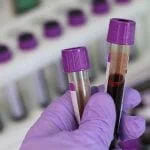How to write a successful Horizon Europe RIA proposal?
Your RIA proposal – our tips and tricks in a glance
- Reviewers have no time: Let’s convince them straight away!
- The EU wants more than excellent science: What is an outstanding consortium for the EU?
- Show why it’s a “game-changing project”: How to make your proposal into a must-be-funded project.
- RIA consortium rules: What will tip the excellence scale to get funding?

How to convince the reviewer to fund your RIA proposal?
Despite our IT-driven world, human peers will review your project!
Reviewers will receive many proposals to be reviewed in a pretty short time. On average, they spend 4 hours on each proposal. You must convince them to fund your proposal within the first 5 minutes.
This begs the question: How do you quickly explain the project? While the European Horizon Europe commission has structured specific templates, the three sections, Excellence, Impact, Quality, and Implementation Efficiency, contain much information. Hence, the game is not to give as much information as possible but to be clear and concise and focus on bold, vital points.
Tip #1 – Pitch your RIA project on one single page
When the reviewer fully understands the project after a 2-minute glimpse at the first page, imagine how grateful they must be! That’s what pitching is for.
The best pitches use images, short sentences, clear thinking, and funnel structures from significant challenges to precise answers. Ideally, the reviewer should know after this first page whether they will give their approval for funding. Reading the entire proposal should then become a matter of deepening their opinion.
- You may consider the following questions:
- What significant issue is the project addressing? For RIA Horizon Europe, an important issue is not a tremendous scientific problem but a significant societal issue. In the frame of the RIA program, the EU doesn’t care about how excellent and complex your technology is. The critical point is to ensure your technology has a perfect chance to solve a significant problem.
- Which obvious solution will this consortium provide? The best solution is not only a promising technology but a technology that can be realistically exploitable and marketable.
It would be best to show that this goal drives your research work. Many researchers want to fund their idea and build an artificial market story with a weak plan and market study work package implementation. Unfortunately, it is as easy for a reviewer to see this unnatural pattern as for a researcher to see contrived scientific arguments built by a marketer.
- Which competitive advantages does this consortium have over others to achieve its goals? Show how all participants of the projects are perfectly fitted to build the solution as state-of-the-art pioneers. Only a consortium of motivated, complementary, state-of-the-art partners can find solutions to significant societal challenges where all the others have failed.
- What are the significant steps to follow to achieve the project? Implementation is essential for Europe. Give reasonable timing and provide a flexible roadmap, considering market signals throughout the project.
Tip #2 – Summarize your ideas at the begining of each paragraph
100% of the paragraphs of your RIA proposal should start with a bold sentence with the very essence of your idea. After a perfect pitch, one would dream of scrolling down through the entire proposal and being conducted with the same logic and structured thinking. It is better for the understanding to repeat ten times three key ideas than three times ten ideas, isn’t it?!
Tip #3 – Provide short and sharp conclusions to your RIA project sections
Ideally, your RIA proposal should be understandable with a single-page initial pitch, an introduction paragraph, and a clear conclusion. The body part then details, which matters too but will not significantly impact, placing the reviewer positively and willing to give a favorable report to the EU Commission.
Tip #4 – Better give 3 good arguments, than 3 good arguments + 1 weak one
Focus only on strong arguments: do not give weak secondary arguments to explain why your technology may solve this or this problem. If you add unnecessary questionable arguments, they will be the topic of discussion between referees instead of seeing them discussing your strong points.
Eliminate common non-qualifying adjectives (like innovative, disruptive…) and replace them with qualifying adjectives based on facts (the fastest, the smallest…).
What makes an outstanding RIA consortium for the EU?
Tip #5 – Respect the 4 “I”s rule for your RIA proposal
The EU is looking for “TRANS” projects. Your project must go beyond the state-of-the-art, gathering partners from different fields and countries to achieve your goals.
Follow the RIA call description, and remember: wording DOES matter. If you create an artificial “innovative, international, intersectoral, interdisciplinary” consortium solely to fit the grant guidelines, you will fail. There’s a purpose to each of these requirements for the EU:
Innovation
Innovation is different from research. Innovation means bringing technology to the market. RIA projects aim to develop new technologies with real market applications. So, your actual research director in this project should always be the market.
Interdisciplinary
Putting physicists next to biologists in your RIA proposal doesn’t count! The EU wants interdisciplinary consortiums because if it were that easy to set up, many outstanding issues would already be solved. Complex technologies require different expertise from many people. The UE wants interdisciplinary consortiums with the best experts from all the necessary fields because it increases the chances of finding the right technological solution.
International
The goal here is not just to put foreigners next to one another. For Horizon Europe RIA projects, it is the consequence of a scientific reality: the best partners are geographically distant. You must gather the best partners from Europe to create the best consortium.
Don’t consider integrating a small lab from another country to sound international. Be international because you need to be to gather the best consortium members.
Intersectoral
The EU wants RIA consortiums with both industrials and academics for four reasons:
- To integrate a partner willing to valorize the project outputs, typically SME profiles with motivated entrepreneurs.
- Companies, typically big companies, can be the end users of your technology if you target a big market, as we hope you will! It is always good to have a potentially highly interested end user inside your consortium, to reorient the R&D if needed, and eventually to valorize your solution.
- Let’s be honest: companies might not be the best for fundamental research, but their processes are very efficient for engineering, which can boost your research.
- Companies can take care of the industrialization and valorization of their technologies, which must be planned for from the beginning of the R&D process.
Shake it and make it outstanding!
Gather an outstanding consortium with the best experts in Europe. Having the best labs with an excellent track record for a specific topic is critical.
As clearly outlined by the proposal template, the EU pays attention to the project’s excellence AND its actual implementation. Combined with an evident solution to a significant societal challenge, these are the critical elements to building a successful RIA proposal!
Tip #6 – Get partners with an excellent scientific/H2020/Horizon Europe/valorisation track record to target a great societal challenge
In your first discussions with potential partners, evaluate their knowledge of Horizon Europe programs.
It should not prevent you from involving new labs, young teams, or unexperienced industrial partners; however, partners able to provide a track record as participants to previous H2020 or Horizon Europe consortia and experience in succeeding in developing and commercializing a technology on similar markets will both reassure the EU reviewing process and help you to deliver your work packages later on correctly.
Tip #7 – Get experienced partners on every critical aspect of the RIA project
The EU only funds outstanding consortia addressing significant societal or technical challenges. You must:
- Identify a significant societal issue.
- Present it clearly and briefly, and explain how you will solve this issue.
- Demonstrate that you have gathered the best partners in Europe to take up this challenge on every key point.
- Build the consortium with partners throughout the whole value chain, from the fundamental studies to the product.
For the latter aspect, you can find a short tutorial providing tips on finding an industrial partner.
Tip #8 – Find appropriate partners covering the full value chain of the innovation from fundamental studies to product development
As we mentioned, to stay close to the market for market studies, to innovate and industrialize technologies… Industrial partners are essential.
For excellence in research, disrupting ideas, fundamental discoveries… Academic laboratories are the best partners.
The right balance between the two will allow you to use the best of both worlds in your project.
Source: ec.europa.eu
How to shape a game-changing RIA project
All EU countries take part in the European Commission Research and Innovation effort. This represents massive investments to support research excellence. Supporting science is, per se, a reason to allocate resources.
However, the EU has apparent “return on investment” criteria, and these massive efforts must positively impact society. It becomes about how great science leads to great solutions for EU citizens and humanity: saving lives and creating economic activity.
One single proposal may not cover the entire innovation chain. Some deal with higher or lower technology readiness levels (TRLs).
RIA projects deal with relatively low TRL levels (until TRL6 on a 1 to 9 scale, TRL9 being a commercialized product). Considering this element of the scope, your project should transform an idea that solves a big problem into a functional solution in the hands of an end user, inside or outside the consortium (ideally, both).
Such a beta-test validation is the best opportunity to request second funding with a valuable track record. If you succeed in putting your technology in the hands of your end user at the end of your RIA program, and if it solves their problem, we have good news: you are now part of the very happy few who should readily find additional Horizon Europe funding to continue your work towards the market.
Tip #9 – Identify a big societal problem and make sure your proposal provides a clear implementation towards a functional solution
A functional solution is not an experimentation working perfectly fine on a bench. Instead, it is a prototype used by end users to solve their initial problem.
Tip #10 – Identify what will have a big impact. But what gives impact to your research?
The EU wants high-impact research. Some researchers may think that working on a technology, getting scientific results, and going far beyond the state of the art will impact their research.
What impacts your research project in an RIA proposal context is what people can do with your technologies.
R&D significantly impacts people if they use the output to solve outstanding issues. Unfortunately, time-consuming protocols and efforts put in by teams at the bench are not relevant criteria for evaluating the impact.
The EU measures impact through the application of these efforts: who will valorize them (end-users) and to what end (solving outstanding issues).
In addition to societal impact, one should consider the economic impacts.
To quantify the project’s outputs, the EU pays specific attention to its “returns on investment” regarding increased competitiveness, employment,
or start-up inception.
A company (start-up or existing one) could benefit from the output(s) of the project to become a leader in a market area with substantial competitive advantages. The EU would acknowledge any of these outcomes as a successful impact.
For more information, you can look at our webpage dedicated to the Horizon Europe Impact Section.

Our microfluidic expertise and RIA projects
We will be glad to participate in your project. Visit our dedicated webpage to learn more about our expertise as H2020 and Horizon Europe partner!
Curious about the calls currently open?
We are particularly interested in the following calls but remain open to any collaboration!
- EIC WORK PROGRAMME that supports all stages from R&D to industry for game-changing innovations
- HORIZON EUROPE RIA CALLS, specifically focusing on health and food, bioeconomy, natural resources, agriculture, and environment
Have a look at our funded RIA proposals:

Chromatin organization profiling with high-throughput super-resolution microscopy on a chip.

Personalized and/or generalized integrated biomaterial risk assessment

Electrochemically-enabled peptidomics for next-generation personalized medicine